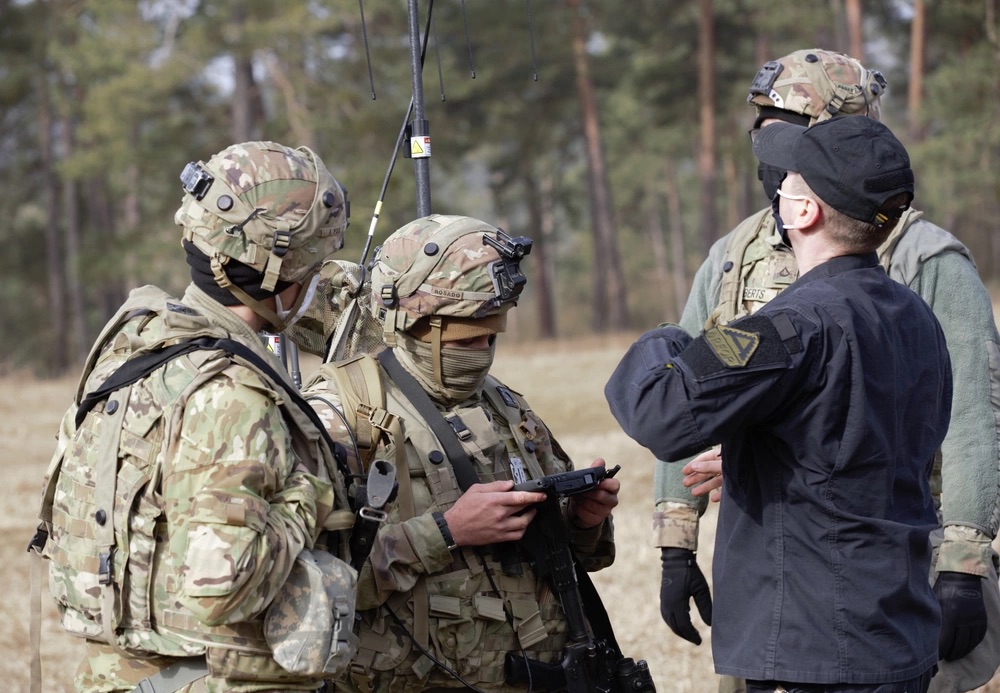
The conflict in Ukraine has shown that large-scale equipment like tanks and artillery can be easily neutralized with explosives carried by commercially available drones.
The electromagnetic spectrum — the critical technology enabling wireless communication — is a finite resource essential to both our current and future military operations and future military capabilities.
However, outdated equipment, a lack of a clear spectrum strategy, and the Federal Communications Commission’s inability to auction new frequency bands have hindered the US’ ability to close the spectrum gap with our adversaries, posing a significant threat to national security.
Emitting Signals
During World War II, something as simple as a soldier’s cigarette ember could give away their position to enemy snipers. In future battlefields, the risk comes from cell phones. The digital signals from these ubiquitous devices can reveal troop movements and compromise America’s most sophisticated military hardware.
A recent exercise at Fort Irwin, the Pentagon’s electromagnetic test site in California’s desert where I commanded an aviation company several years ago, highlighted these risks. An Apache helicopter, normally undetectable, was located when the pilot’s iPhone was detected while flying 120 miles (193 kilometers) per hour.
While soldiers can leave their phones behind, as we did before deploying to Iraq, what happens when the equipment they rely on emits signals that betray their location? This is the stark reality our servicemembers face due to the Department of Defense’s policy of reliance on spectrum resources for outdated systems.
Take the radar systems on ships and airplanes, for instance. These have occupied crucial spectrum real estate for decades. The US Navy’s Aegis AN/SPY radar system, operating in the Lower 3 GHz band (3.1-3.45) of the midband spectrum, has been used since the Nixon era.

Shift in Approach
While safeguarding America’s naval and air fleets is undeniably critical, the nature of modern warfare demands a shift in the Pentagon’s approach to electromagnetic warfare.
Major General Jeth Rey, Director of the Network Cross-Functional Team at Army Futures Command, emphasized this need, “We must address the US’ ability to hide in plain sight on the battlefield by reducing electromagnetic signature, improving training, and sensing and understanding electronic signals.”
Reducing our military’s spectrum footprint starts with a comprehensive review of the frequencies in use. Though this is not an easy task, as Theodore Roosevelt once said, nothing worth doing ever is.
Unfortunately, the Pentagon often clings to the status quo and uses its influence to resist necessary changes. The Lower 3 GHz is a case in point. Despite evidence showing that military and 5G operations coexist in over 30 countries, the Department of Defense has repeatedly refused to free up any part of this band for commercial use.
The military’s reluctance to adapt was a key factor that led to the Federal Communications Commission’s auction authority expiring last year, marking a setback for America’s leadership in wireless innovation.
Reallocating federally-held spectrum for commercial use through competitive bidding has been a model of success for years, a process that earned the economists behind it the Nobel Prize. Yet today, the process has ground to a halt.
Spectrum Gap
While the US hesitates, our adversaries continue to advance. During the Cold War, the fear of the Soviet Union outpacing the US in intercontinental ballistic missiles spurred efforts to close the “missile gap.”
Today, we face the urgent task of closing the spectrum gap before China dominates 5G technology and leads the world in licensed commercial spectrum allocation. Moreover, both China and Russia have developed advanced electromagnetic warfare strategies tailored to modern combat. Clinging to spectrum for outdated equipment will not keep America secure.
The Pentagon must recognize that spectrum policy need not be a prolonged struggle between national security and commercial interests. A thorough review of military spectrum usage could free up valuable frequencies for commercial innovation, strengthening our economy.
To provide our soldiers with the tools they need for 21st-century warfare, the Department of Defense must take a more strategic approach to spectrum policy.
 Aaron Pluto is a retired military officer, Army aviator, and adviser on the former Soviet Union who has served as a strategic consultant to top-level military leaders and diplomats domestically and overseas.
Aaron Pluto is a retired military officer, Army aviator, and adviser on the former Soviet Union who has served as a strategic consultant to top-level military leaders and diplomats domestically and overseas.
The views and opinions expressed here are those of the author and do not necessarily reflect the editorial position of The Defense Post.
The Defense Post aims to publish a wide range of high-quality opinion and analysis from a diverse array of people – do you want to send us yours? Click here to submit an op-ed.











